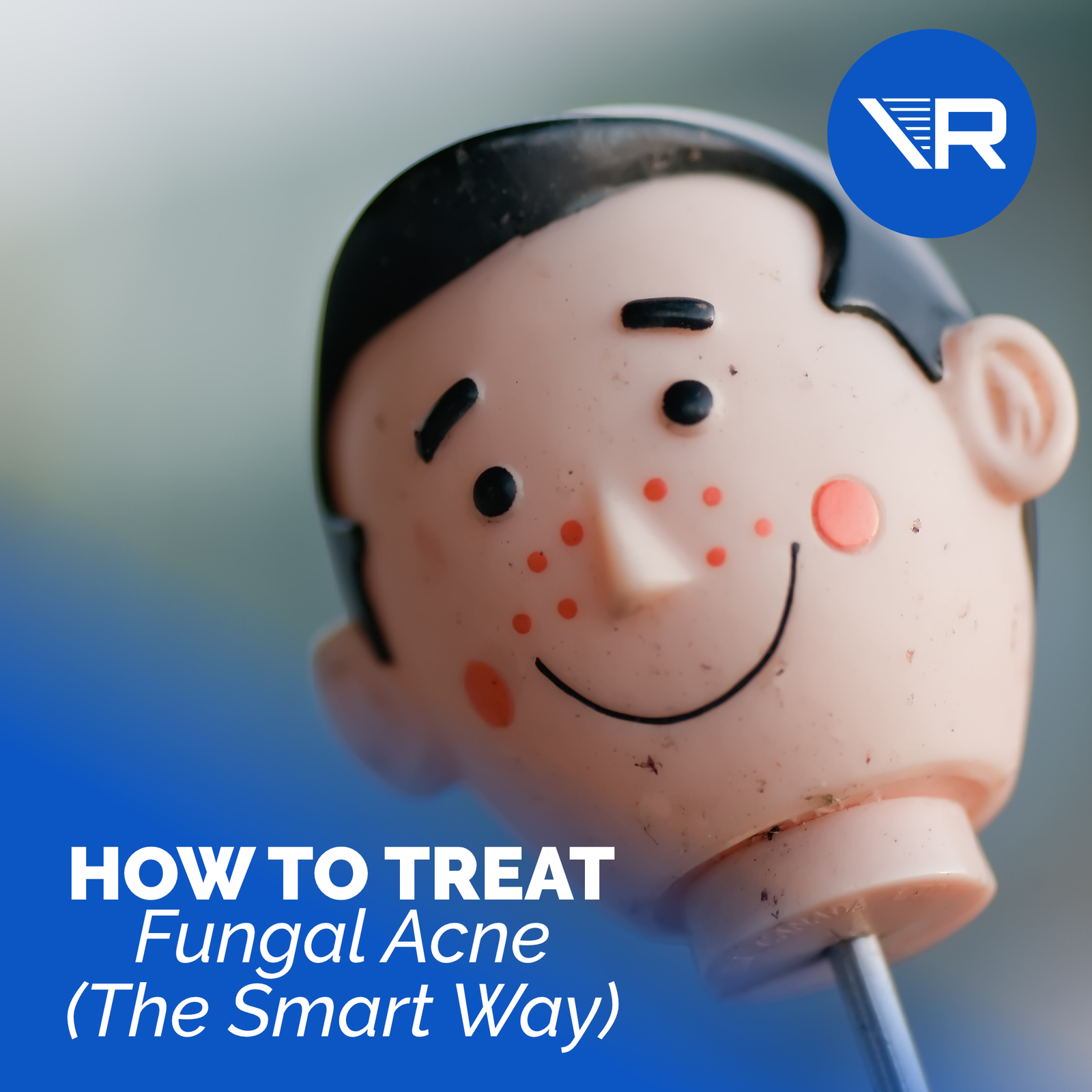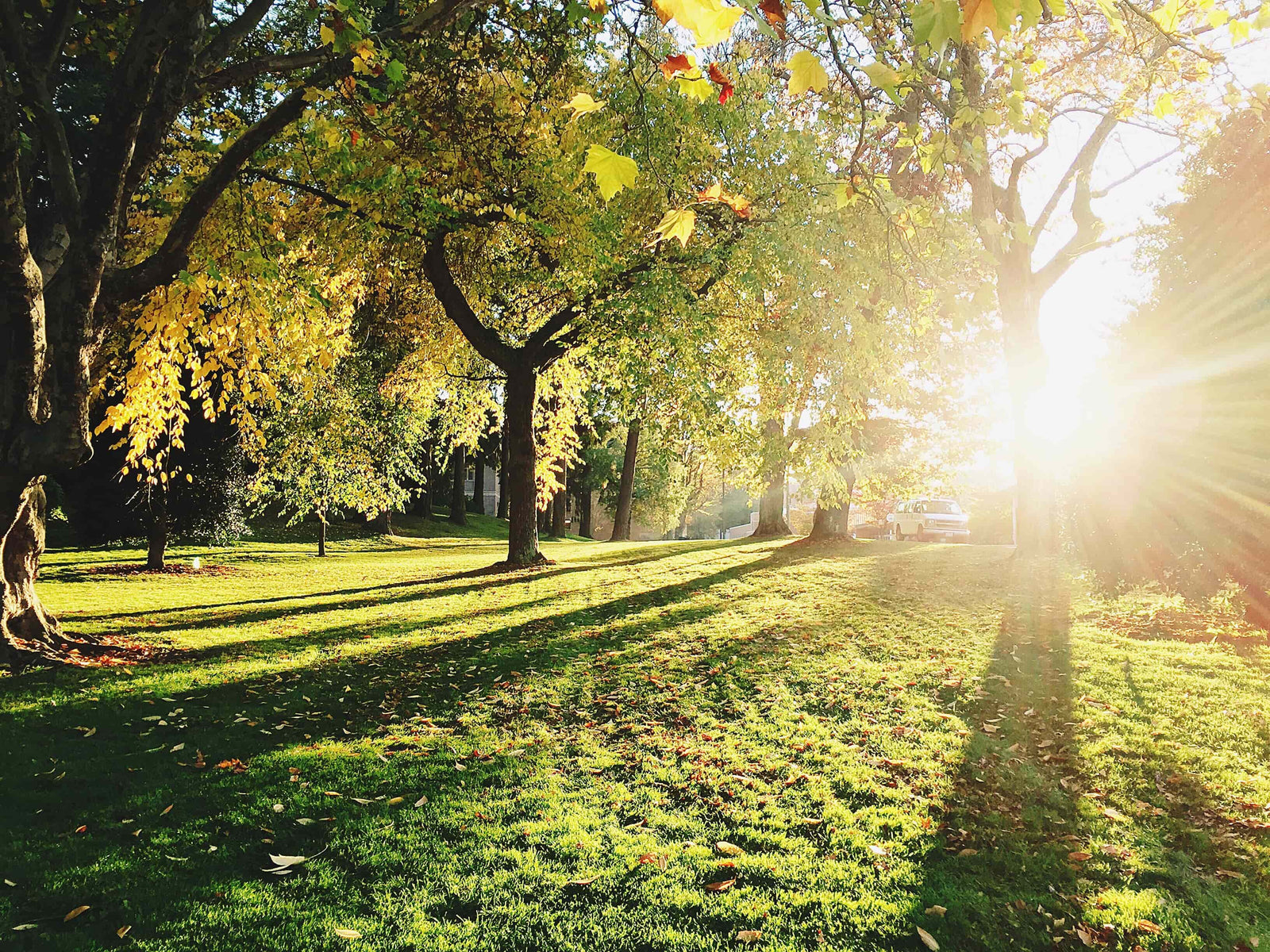
Do you have acne that doesn't seem to want to go away?
Even though you put tons of benzoyl peroxide and salicylic acid on it for weeks, your acne still seems to be just as red and raging.
What is going on here?!
Unfortunately, you might have fungal acne.
Many people think they'll just have to accept the fact that they will forever have those irritating bumps on the forehead, nose, chin, or other places acne typically shows up.
Luckily, if it turns out you have fungal acne,
there
are ways to get rid of it... Even if it seems like a lost cause.
In this article, we'll discuss what fungal acne is, what causes it, and best of all, how you can treat it!
So if you're ready for clearer skin, keep on reading…
What Is Fungal Acne?
While fungal acne looks somewhat like the usual acne caused by bacteria that penetrate the hair follicle when there's a buildup of oil and sebum, it's actually a buildup of yeast.
The scientific names for fungal yeast are
"pityrosporum folliculitis" or "Malassezia folliculitis".
Malassezia folliculitis actually occurs naturally in our skin, but heat and humidity tend to breed yeast, causing a buildup that clogs the pores and causes flare-ups. Sweat is another contributor to producing the conditions in which yeast is cultivated.
What Does Fungal Acne Look Like?
The tricky part of having fungal acne is the fact that you might not be aware that you have it.
However, with a little comparison, you'll be able to tell the difference between fungal and regular bacterial acne pretty easily.
Some general characteristics of fungal acne include:
• Inflammation
• Acne-like pus at the center
• Itchy
• Usually appears in clusters
• Uniform shape and size
Fungal acne is usually found in areas where you produce a lot of oil.
For those who have oily skin, it can form anywhere on the face and body. For those with normal to dry skin, it usually develops in the T-zone (chin, nose, and forehead).

(Image source: https://skincareless.com/curing-fungal-acne-folliculitis-journey)
Is Fungal Acne Contagious?
Yes, it can be contagious...
...Especially if a person with fungal acne has close contact with others.
If you think you have fungal acne, try to avoid any close contact with other people.
Avoid kissing and hugging during a flare-up. You should also be sure not to share personal items that may come into contact with the acne, such as pillows, face towels, or makeup.
Fungal acne can also be contagious in warm, damp communal areas where people come in indirect dermal contact with each other, such as saunas and shower floors.
Unsanitized mats and exercise equipment at the gym can also be a culprit.
Fungal Acne VS Bacterial Acne
We've already pointed out the characteristics of what fungal acne looks like, let's go a little further in-depth into the differences between fungal and bacterial acne:
Bacterial Acne
Bacterial acne, or
acne vulgaris, is caused by bacteria growing in the hair follicles of the skin, usually transmitted through the buildup of dirt, oil, and dead skin cells, which form comedones. Sometimes, it may form a bump or even be inflamed, but there are times when it is a bit flat with a little pus.
It can also be a combination of blackheads, whiteheads, deep cysts, red bumps, or skin-colored bumps.
Also, they are usually found on the cheeks, forehead, nose, jawline, chin, temples, hairline, back, and neck.
Bacterial acne is typically relatively easy to treat effectively. Topical, over the counter acne treatments usually work fine for mild or moderate acne. More severe acne may require a visit to the dermatologist for prescription topicals, or oral medications.

(Image source: https://zula.sg/fungal-acne/)
Fungal Acne
Caused by an overgrowth of yeast in hair follicles, fungal acne may look like a typical whitehead, but does not have the comedones present in bacterial acne. It's usually accompanied by redness and inflammation, and it's also commonly accompanied by burning and itching.
It is commonly found in the oily areas of the face, such as the forehead, nose, and chin. However, it can also form on the back and chest.
Many people who suffer from fungal acne are also likely to have other fungal dermatological issues like dandruff.
Both dandruff and fungal acne are caused by malassezia yeast, and both are often treated with topical anti-fungal medications.
Unfortunately, no amount of anti-bacterial acne topical or oral medicines will get rid of fungal acne.
Treating fungal acne not only requires the use of specific topical medications, but it can also mean changing your lifestyle, and even your diet.
What Causes Fungal Acne?
Fungal acne is caused by a buildup of malassezia in the pores, but this kind of yeast is always present in our bodies and on our skin.
The keyword here is buildup.
When malassezia grows rampantly, causing an imbalance internally or externally, an outbreak of fungal acne is possible. It's important to understand how these imbalances occur to learn how to treat fungal acne.
According to scientists, several factors contribute to the over-production of malassezia.
Here are some examples of the most common:
Environment
Yeast loves warm and wet environments. The more hot and humid the climate, the more common it is to contract fungal acne.
Medication
Antibiotics and some other forms of medication can contribute to the overgrowth of malassezia.
Changes in diet
Yeast thrives in carbohydrates and sugar (think rising dough for baking bread). While it's not usually the initial cause of fungal acne, what we eat may certainly contribute to it. Be mindful of what you eat regularly, and choose to moderate sugar intake and limit carbohydrates.
Skincare routine
If you're using skincare products or makeup with a lot of oil, this can contribute to fungal acne flare-ups.
Workout regimen
Again, warm and wet environments breed yeast production, so after a workout, make sure to dry off thoroughly and manage perspiration.
Personal hygiene
Regular showering, and making sure not to wear damp clothing like workout clothes for too long can help keep fungal acne at bay. Change clothes after excessive perspiration.
More often than not, the skin rebalances yeast production on its own, although sometimes that just doesn't happen, and you find yourself stuck with a case of fungal acne.
Still, as long as you're mindful of the above factors and how they occur in your daily life, keeping fungal acne at bay might be relatively easy.
Keeping Your Immune System Healthy
Keeping the immune system healthy and balanced is the frontrunner for how to keep fungal acne at bay.
Our skin has its own microbiome, an ecosystem of different microorganism that helps keep a balance of "good" bacterias, or "bad" bacterias and fungus.
Therefore, if there is an imbalance, your skin will take automatic measures to protect itself and restore that balance.
But of course, it also needs help from your immune system in order to fight off the pathogens that are causing the problems which lead to an imbalance.
In short...
If your immune system is in check, even though there is an imbalance, your skin is well equipped to fight your fungal acne.
If it is as simple as that, why is fungal acne so common?
And why can it be such a difficult problem to get rid of?
Plainly speaking:
It takes a long time to restore the disrupted balance of your skin's natural microbiome, it has to go through a multi-step process. Proper treatment is the only way to hasten the process, and this is where specialized medication and skin care treatments can help.
How to Treat Fungal Acne?
Unlike bacterial acne, where the solution is just to use an effective cream or oral medication, fungal acne treatment requires two crucial steps, not one.
The first step is a skincare routine change, and the second one is a lifestyle change.
Seeing a dermatologist to guide you through these treatments is extremely important. A professional will be able to diagnose your acne correctly to begin with, and determine if you do, in fact, have fungal acne.
Your dermatologist is also trained to outline a treatment plan, potentially including in-office procedures, and prescribing either topical or oral medications.
DO NOT attempt to self-medicate, or experiment with different treatments for fungal acne without consulting a professional.
Doing so may make it much worse or even cause an allergic reaction.
A multi-step process may seem high maintenance, but it's worth it.
Not only to get rid of fungal acne but to get healthier, more beautiful skin in the long run. Some of the treatments your dermatologist may recommend include:
1. Changes in Skin Care Routine
Use a chemical exfoliant
An excess buildup of dead skin cells has the tendency to trap oil, providing an excellent environment for fungi and yeast to breed. Using a chemical exfoliant will help get rid of those dead skin cells, so you are always left with regenerated skin.
Your dermatologist will probably recommend that you steer clear of chemical exfoliants that have a high ph level as this might contribute to your skin imbalance. It is best to stick with an exfoliant which only has one main ingredient like salicylic acid, lactic acid, or bakuchiol.
Use topical fungus treatments
Because malassezia is a fungus, your dermatologist will probably either prescribe or recommend the use of anti-fungal lotions and creams. There is a variety of anti-fungal products readily available over the counter in any drugstore if your doctor recommends it, and doesn't think using a prescription-strength topical is necessary. There are a few guidelines for using these topical treatments for fungal acne:
- It is important to note that you should not apply these products too thickly, they're meant to be used sparingly because they're typically pretty thick in consistency, and it's possible it may not all be absorbed into the skin. This will leave a layer of topical product on the surface of the skin, resulting in the perfect breeding grounds for yeast.
- Avoid using skincare with ingredients that trigger the production of yeast. We have already established that excess oil is your enemy, so it's a good idea to stay away from skincare products that have oils and fatty acids, such as linoleic acid, lauric, stearic, palmitic, oleic, etc.
- Another thing to stay away from is skincare products that contain fermented ingredients. Yeast production accelerates during fermentation (think about brewing beer!), so it is best not to use products that contain galactomyces and the like.
- An excellent guide to pairing your skincare products with anti-fungal treatments can be found in this video from the owner of Krave Beauty, Liah Yoo.
Use natural anti-fungal treatments
If you have sensitive skin or don't feel comfortable with using chemical exfoliants or treatments on your skin, there are still great options for skincare products that you can use. Green tea, honey, or propolis extract are common ingredients in natural anti-fungal treatments.
2. Changes in Lifestyle
Wear breathable and natural fabrics
Wearing synthetic materials can irritate the skin, and it can also exacerbate oil production, especially on the back and chest. Our goal is to limit the production of excess oil, so it is best to make sure that the oil is not "trapped" on the skin, and it can dissipate naturally.
Change out of your sweaty clothes
Yes, we understand that it is a hassle to change your clothes after an intense workout immediately. But just think about this, the longer you are wearing your wet or sweaty clothes, the more habitable your body it is for fungi and yeast.
Avoid too much heat
Sebum production and inflammation are increased when you are exposed to extreme temperatures. This can also lead to yeast overgrowth.
Avoiding the sun completely may not be a realistic goal, but refraining from sunbathing or going to saunas is a good start. If you're an excessive perspirer, the use of cold rollers to cool down the skin after prolonged exposure to sun and heat is a good way to moderate sweat and humidity.
Cut your sugar intake
Fungi and yeast thrive on sugar as well as simple carbohydrates that turn into sugar in our bodies. Therefore, if they do not have anything to feed on, they will eventually die.
It is best to go on a low carbohydrate diet comprised of lots of vegetables, fruits, and whole grains. It may be a sacrifice, and the change may be a little difficult at first, but you are not only helping to get rid of your fungal acne, you're also cultivating good health and healthier habits!

How Long Does it Take to Get Rid of Fungal Acne?
Let us first start with the bad news...
If you've had fungal acne for a while and didn't realize it, by this time, they may have spread to every nook and cranny of your body. Even if it's not that severe, it may take a few months to a year to completely get rid of it.
However, if spotted and treated quickly, your fungal acne will be less likely to spread to other parts of the face and body. If this is the case, chances are, it'll clear up within three days to a week.
Even if you've caught it later rather than earlier, once you begin treatment for fungal acne, the results will be significant.
Little by little, the fungi and yeast causing all that inflammation and discomfort will fade, and eventually, it will go away completely.
Mallassezia folliculitis is more common than you think!
When it comes to treatments, there is a wealth of options from which to choose if you suffer from fungal acne.
The process may be intimidating at first, and seem unpleasant for some of us when it comes to changes in diet and lifestyle, but with the help of a professional, effectively clearing up fungal acne should be a fast and easy process, paving the way for a lifetime of beautiful skin.




Kamuju Akhila
August 16, 2022
I am having fungal acne from 7years I moved to several hospital to treat but it came back and back so how to treat plz tell me I am breathless